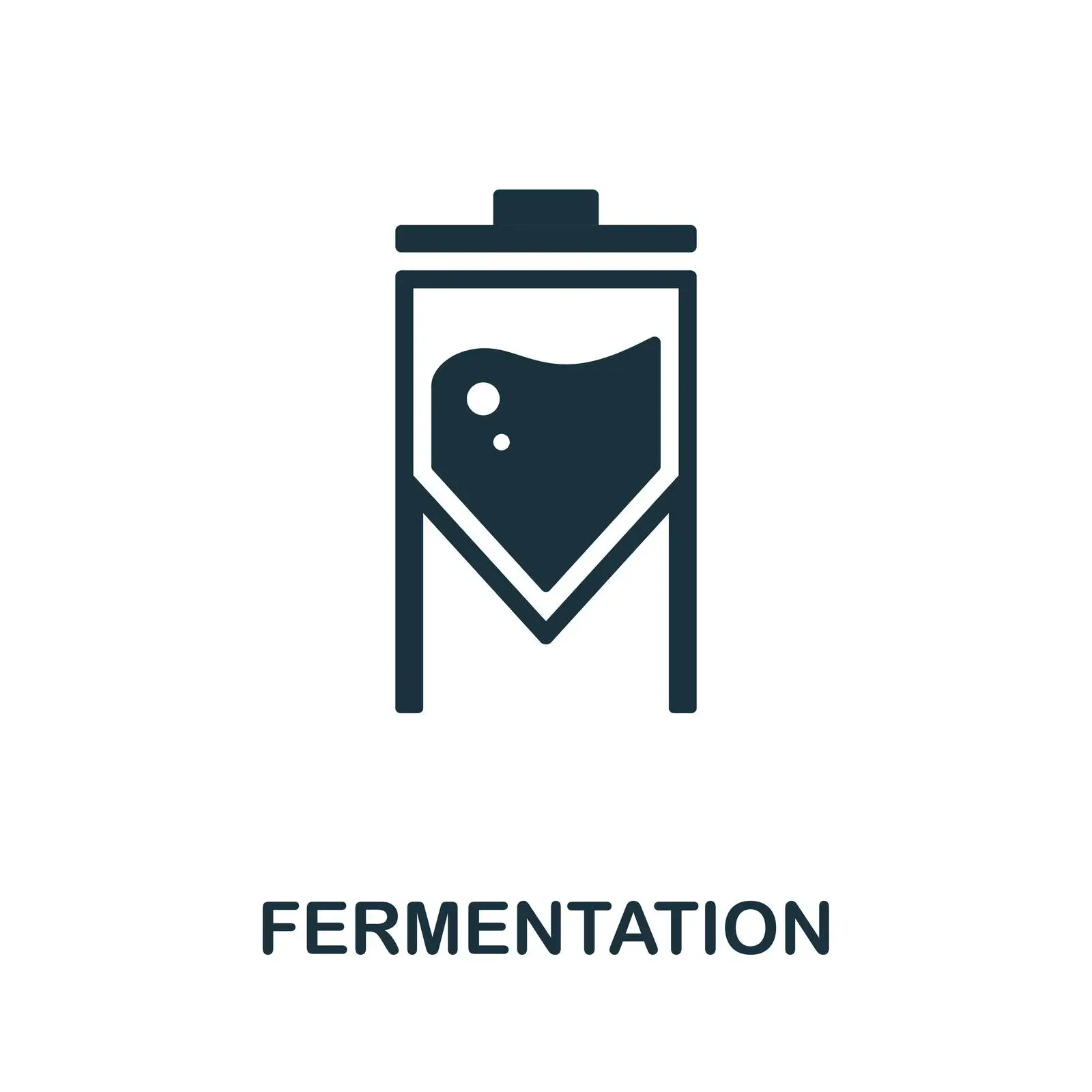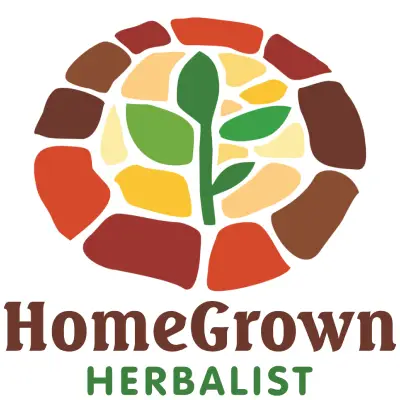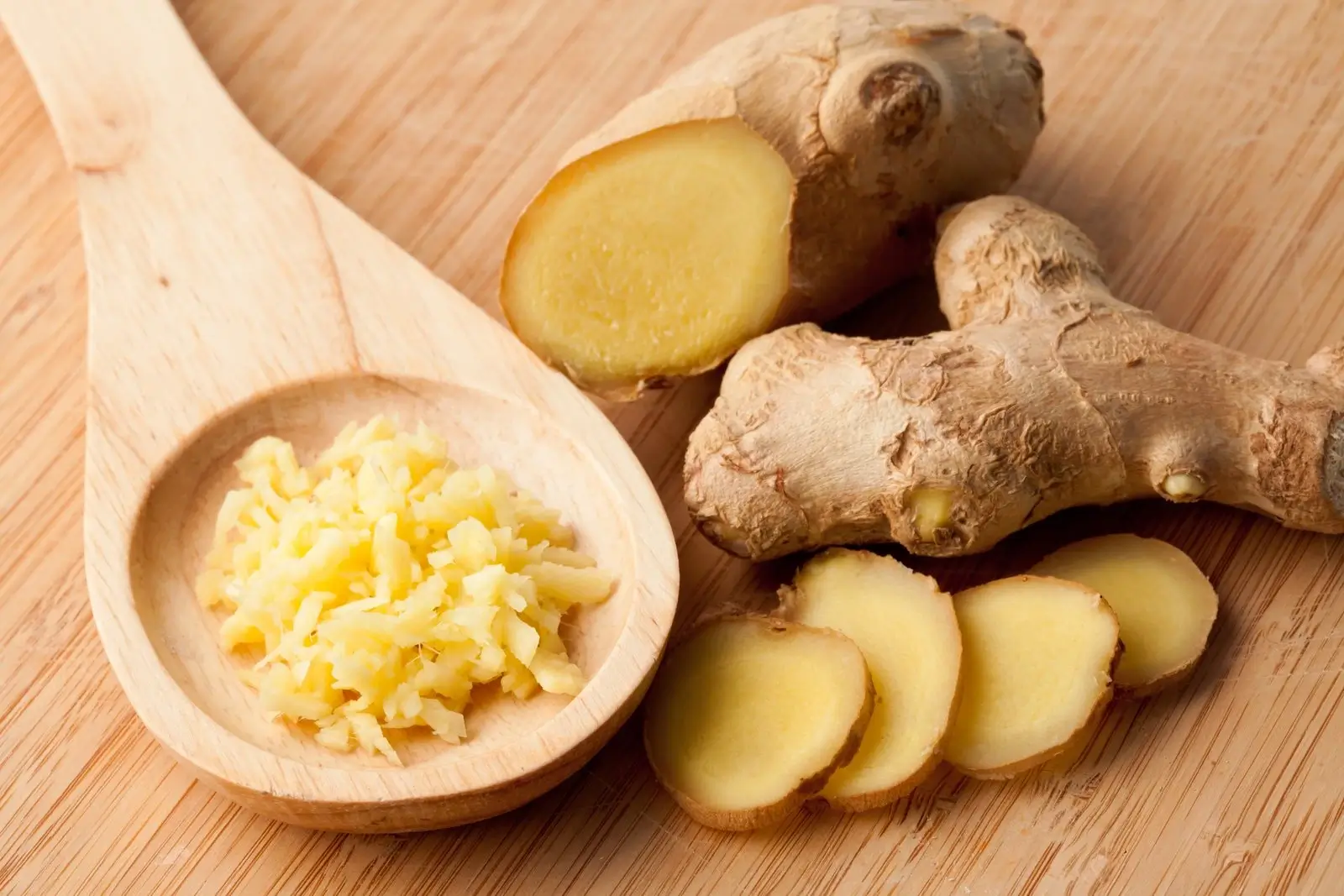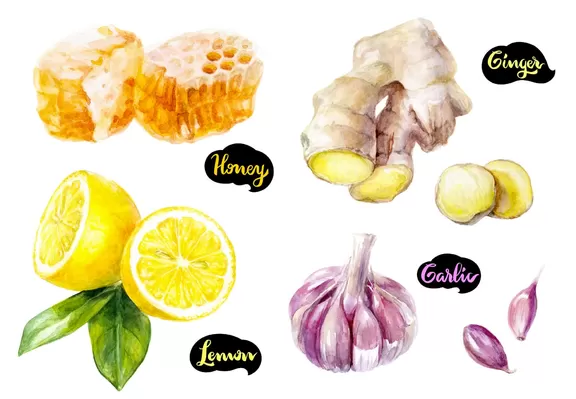
Ginger (Zingiber officinale) has some proven health benefits. But, there is not much information specific to how fermented ginger differs in therapeutic value compared to fresh ginger. But, it appears that certain types of fermenting may increase the primary therapeutic chemicals of ginger: gingerols and shogaols.
Gingerols and shogaols have been investigated by many studies, and they are what you should look for when comparing ginger supplements. Without these critical phenolic compounds, ginger would not have the medicinal value that it does!
The increase in gingerols and shogaols (which are phenolic compounds) seems to differ depending on what type of microorganism used to ferment it. One study we will look at found that fermenting via a commonly used food processing fungus, Trichoderma, increased phenolic content of ginger.
Conversely, another study we will look at, that used Lactobacillus in their fermentation process, did not see an increase in gingerol but some increase in shogaol. And, another study with a possibly ambiguous fermentation process, did not see an increase in gingerol.
Since the study using Trichoderma showed a good increase in phenolic content of ginger via fermentation, it is reasonable to extrapolate that other fungi might have a similar effect. Either way, you may want to avoid ginger fermented with Lactobacillus if you are looking for an increased phenolic content.
Dr. John Herzog (MD)
Dr. John Herzog, a "survival surgeon" from Maine explains what home remedies work best in a crisis situation.
This may be important in the event you require first-aid or are in an emergency situation without easy access to a hospital. Dr. John Herzog has assembled a large collection of home remedies for such scenarios.

General Health Benefits of Ginger
![Gingerol, a chemical found in ginger. [6]-gingerol, [8]-gingerol, [10]-gingerol](/img/Gingerol.webp)
It is reasonable to assume that the health benefits of fermented ginger will be very similar to actual ginger. Yet, the health benefits conferred by ginger may largely be due to the phenolic gingerol and shogaol compounds present in the herb. Thus, since fermentation may increase these, fermented ginger may improve upon the health benefits of fresh ginger.
The typical health benefits of ginger (not related to fermentation) were discussed by a study published in Nutrients [12.1 (2020): 157].(source 1) The study was entitled "Ginger on Human Health: A Comprehensive Systematic Review of 109 Randomized Controlled Trials." According to some of the studies in this review, ginger:
- Reduces chemotherapy-induced nausea and vomiting.
- Reduces nausea and vomiting from pregnancy.
- Reduces nausea and vomiting induced by HIV therapy.
- Enhances digestion.
- May provide a beneficial effect on colorectal cancer by reducing tumorigenic risk factors.
- Helps in general pain relief.
- May help reduce migraine pain.
- Acts as an anti-inflammatory.
- Helps in weight loss: lowers body fat mass, body fat percentage, total cholesterol, waist circumference, waist-to-hip ratio, and insulin resistance.
Claire Goodall’s Amazing Guide
Clair Goodall is a bee-obsessed, natural medicine convert from Minnesota (USA). And, she does keep bees!
Clair has created 350+ page book documenting how to replace the toxic products and medications in your home with healthier, all-natural alternatives.

Fermenting Ginger with Trichoderma Improves Phenolic Content
A study, published in Letters in Applied Microbiology [67.2 (2018): 161-167],(source 2) looked at how fermenting ginger would change it; and, how those changes would affect health benefits. Specifically, it looked at how fermenting ginger improved the presence of phenolic compounds.
The primary reason for ginger’s health benefits may be due to the presence of phenolic compounds such as [6]-gingerol, [8]-gingerol, [10]-gingerol, and [6]-shogaol. Therefore increasing gingerol and shogaol could increase the medicinal ability of ginger.
The study used a water extracted ginger and also an ethanol (drinking alcohol) extracted ginger. These two extracts were fermented by Trichoderma fungi. This research fermented the ginger with solid state fermentation; which is when microorganisms grow on solid materials without the presence of free liquid.

Comprehensive Herbalist School
Dr. Patrick Jones, founder of the HomeGrown Herbalist School of Botanical Medicine has been a practicing veterinarian for over 25 years. He is also a clinical herbalist and traditional naturopath.
Kevin Harrington, Original Shark from ABC’s Shark Tank, stands behind Dr. Patrick Jones and HomeGrown Herbalist.
Learn More
Comprehensive Herbalist School
Dr. Patrick Jones, founder of the HomeGrown Herbalist School of Botanical Medicine has been a practicing veterinarian for over 25 years. He is also a clinical herbalist and traditional naturopath.
Kevin Harrington, Original Shark from ABC’s Shark Tank, stands behind Dr. Patrick Jones and HomeGrown Herbalist.Learn More
According to Cornell University (Geneva, NY),(source 3) Trichoderma fungi are utilized by the food production and textile industries. Trichoderma are able to produce cellulases (a type of enzyme) and other enzymes that break down complex polysaccharides (the most abundant carbohydrate found in food). These enzymes produced by Trichoderma are also used to improve the digestibility of poultry feed.
The study found that unfermented ginger had low phenol content compared to fermented ginger. The fermentation process increased the phenol content of ginger by several times.
Concerning the health benefits, the fermented ginger had approximately double the antioxidant ability compared to unfermented ginger.
Also, when tested on various human pathogenic bacteria, fermented ginger created much larger inhibition zones. To find an inhibition zone, a small amount of a substance is placed on a petri dish. The distance around that substance a pathogen does not grow in is the inhibition zone. Thus, the antimicrobial ability of a substance can be understood via this inhibition zone.
The study found that the inhibition zones for fermented ginger were always much larger than ginger that was not fermented. For Staphylococcus aureus and Escherichia coli the study found the following results:
Staphylococcus aureus
- Unfermented water ginger extract: inhibition zone of approximately 1.5mm
- Fermented water ginger extract: inhibition zone of approximately 25mm
- Unfermented ethanol ginger extract: inhibition zone of approximately 10mm
- Fermented ethanol ginger extract: inhibition zone of approximately 22mm

HomeGrown Herbalist Herb Shoppe
Owner of HomeGrown Herbalist Dr. Patrick Jones is a practicing veterinarian, Clinical Herbalist, and traditional naturopath. He owns and operates Fairview Animal Hospital in Buhl, ID.
Their herb shoppe provides herbs, essential oils, and tools. If you have some time, check it out!
Learn More
HomeGrown Herbalist Herb Shoppe
Owner of HomeGrown Herbalist Dr. Patrick Jones is a practicing veterinarian, Clinical Herbalist, and traditional naturopath. He owns and operates Fairview Animal Hospital in Buhl, ID.
Their herb shoppe provides herbs, essential oils, and tools. If you have some time, check it out!Learn More
Escherichia coli
- Unfermented water ginger extract: inhibition zone of approximately 0.8mm
- Fermented water ginger extract: inhibition zone of approximately 20mm
- Unfermented ethanol ginger extract: inhibition zone of approximately 13mm
- Fermented ethanol ginger extract: inhibition zone of approximately 22mm
Phenolic Content of Ginger fermented with Lactobacillus

A study published in the Korean Journal of Food Science and Technology [43.3 (2011): 249-254](source 4) looked at how fermenting ginger with Lactobacillus species affected phenol content. The species of Lactobacillus used were L. acidophilus and L. plantarum.
This study found that ginger fermented with these L. acidophilus and L. plantarum had a lower amount of 6-gingerol in it. 6-gingerol is the main pungent component of ginger that is thought to have a wide array of medicinal uses. 6-gingerol is believed to be the most abundant bioactive compound in ginger roots.(source 5)
The study found that 6-shogaol increased in L. acidophilus fermented samples; but, was not detected in samples fermented with L. plantarum. Shogaols are minor components of fresh ginger, but increase when ginger is dried or heated. After drying ginger, there is about a 1:1 ratio of 6-shogaol to 6-gingerol present (i.e., about equal amounts after drying).(source 6)
Another study discussed ginger fermented with Lactobacillus species. The study was published in Preventive Nutrition and Food Science [15.4 (2010): 322-328].(source 7) The study appeared to be somewhat ambiguous as to what microorganisms they used to ferment the ginger for their chemical analysis.
Yet, it may have been done with some Lactobacillus species; the study appeared to leave this detail out.

Comprehensive Herbalist School
Dr. Patrick Jones, founder of the HomeGrown Herbalist School of Botanical Medicine has been a practicing veterinarian for over 25 years. He is also a clinical herbalist and traditional naturopath.
Kevin Harrington, Original Shark from ABC’s Shark Tank, stands behind Dr. Patrick Jones and HomeGrown Herbalist.
Learn More
Comprehensive Herbalist School
Dr. Patrick Jones, founder of the HomeGrown Herbalist School of Botanical Medicine has been a practicing veterinarian for over 25 years. He is also a clinical herbalist and traditional naturopath.
Kevin Harrington, Original Shark from ABC’s Shark Tank, stands behind Dr. Patrick Jones and HomeGrown Herbalist.Learn More
This study found that unfermented ginger had a total gingerol content of 1.0019 mg. Fermented ginger had a total gingerol content of 0.8955 mg. Oddly enough, shogaol was not detected in either the fresh or fermented ginger.
An interesting detail from this study, where the species used in the fermentation process are clear, is the sensory impact of the fermented ginger. Ginger fermented with Lactobacillus plantarum had a ginger aroma and putrid taste. Ginger fermented with Lactobacillus brevis had less of a ginger aroma and taste and had a lemon flavor.
Ginger’s Side Effects
Ginger is a very safe herb, and generally will not cause any problems for most people. Yet, possibly the most common side effect is upset stomach or heartburn—espcially if a lot is taken on an empty stomach.
Although ginger has the US FDA’s “generally regarded as safe” (GRAS) certification, there are still some side effects and warnings to be aware of. Possibly the two most important are that this herb should not be taken with blood thinners. And, if you have a history of gallstones, you should avoid this herb.
There are more side effects, drug interactions, and contraindications for ginger; but, are beyond the scope of this article. Herbsey has a full article dedicated to this topic. If you have some time, it is a thorough overview of the side effects of ginger. You can find it here: Ginger’s Side Effects.
About the Author
Geoff Kent is a natural medicine enthusiast who has been researching and writing about natural medicine since 2008. Geoff is primarily a web developer, but also researches and authors written and video content about natural health. Geoff has a bachelor’s degree in Management Information Systems from the University of Northern Iowa.
More on Geoff KentImportant Disclosures & Disclaimers
It is important to use the information you find on Herbsey.com in the right way. Also for legal reasons, these disclaimers and disclosures are necessary. For further information about each, feel free to click the link provided to the page on this website that provides more information.
Medical Disclaimer
The information on this website is not a prescription for anyone. This information is for informational or educational purposes only, and is not a substitute for professional medical advice or consultations with healthcare professionals.
Advertisement Disclosure
Some of the links provided on this article and website are affiliate links. If you purchase a product after clicking on these links, Herbsey.com will earn a commission. Herbsey.com promotes various products through advertisement and text links. For more information: Our Advertisements.







